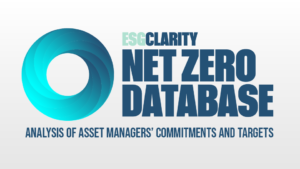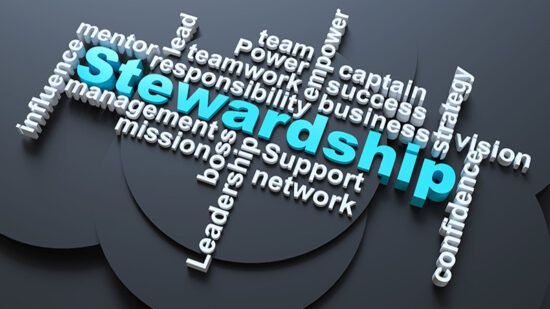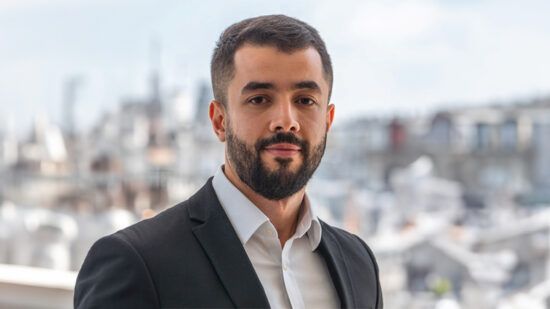In this Green Dream episode, Daniel Lurch, lead portfolio manager for the JSS Sustainable Equity – Green Planet fund, talks about the four key investment themes of the fund and why the fund avoids investing in renewable energy providers.
He also discusses how the fund navigates geopolitical headwinds through diversification and invests in defensive companies focused on long-term trends that address current structural challenges.
Watch the full video interview above and read the transcript below.
MN: Hello and welcome to the latest in the Green Dream video series. I’m Michael Nelson, senior global reporter at PA Future, and I’m joined today by Daniel Lurch, who’s portfolio manager at J. Safra Sarasin. It’s great to be able to chat with you today, Daniel.
DL: Good to see you today, Michael.
MN: Given you’re the lead portfolio manager for the JSS Sustainable Equity – Green Planet fund, I thought it would be great to have a discussion based on the overarching theme of managing a sustainable or a green investment portfolio in a rapidly changing world.
I’d imagine that when people think of green investments, most people think about renewable energy. But last year, you said you made a conscious effort to avoid clean energy providers in your portfolio, which actually turned out to be a pretty decent decision, as the share prices in those companies have faced a bit of an uphill struggle in recent times.
What conditions would need to be in place for you to reconsider that position, and do you see that happening any time soon?
DL: Yeah. Thanks for the question, Michael, and I think it’s a really relevant one. In the Green Planet strategy, we were very cautious on clean tech and renewable energy over the last years. And, I have to say, we didn’t completely avoid it, but we had a very small exposure, so that we were underweighted. The background basically was that we were quite cautious on the business models themselves, their ability to keep margins and the quality of the businesses.
That doesn’t mean, though, that we think the clean energy or renewables revolution is over. We are still in the early innings here, and this is something which will accompany us for the next decades as our energy system is moving towards renewables and towards clean energy. What is important, though, is that there is a major opportunity to think along the value chain of renewables. So, what do we need to transition our energy system towards electricity? And here, we see much better opportunities. For example, in electricity grids and electrical equipment. Hence, we were quite cautious on renewables, which helped the performance of the fund significantly. So, it was good to look much broader into other areas of the electrification value chain, but also into other areas of the green transition. So, for example, in to waterways to keep it diversified.
Now, what would need to change? Why did renewables perform really well in 2021? Back then, we had a situation of low interest rates, we had a situation of strong government support, and we had a consumer who was actually quite healthy. So, coming out of Covid, the consumer had lots of savings and unemployment didn’t develop badly, so, overall, the consumer was positive. And these three things really helped the renewable energy sector. I think for the sector to work again, we would need a return of some or all of these conditions.
In terms of the regulatory or government support, I think one really important thing which you would need is clarity on the Inflation Reduction Act in the US. There has been pushback against that, and it’s unclear whether it would be repealed. So, we would need some clarity here. Clearly, on the interest rate side, it would be helpful to see where interest rates are heading. There has been uncertainty on that in the last few weeks. And then, last but not least, the consumer is important, who also needs to be relatively healthy to make decisions, for example, on discretionary items like residential solar.
MN: Geopolitical uncertainty is something that I would like to address in the next few questions, because one of the main talking points has been around developments in the US with the new administration rolling back some climate policies while fuelling a backlash against ESG and sustainability. So, how do you view the opportunities in green investing, and do the current developments affect your decisions for a sustainable portfolio like Green Planet?
DL: It’s true, after years of very strong support towards sustainability and ESG, there has been a bit of a change. There have been more headwinds recently, and I think we have to acknowledge that. But at the same time, I think, specifically, regarding the green transition and towards sustainability, I think this is a long-term trend which will be with us over the next decades and not really a lot has changed. There’s still significant support by many governments and companies, and, clearly, the public globally for a greener future.
It’s also a big risk factor. For example, in the World Economic Forum’s latest risk report, five of the ten long-term risks are actually environmental. Things like climate change and pollution are the long-term risks that are being considered. So, it’s still at the top of people’s minds, and that gives us the indication that, yes, there has been more and more debate, but the long-term trend is unchanged.
MN: We will definitely come on to some of the main green trends you see for the next year or few years a little bit later. I just wanted to hit on something that’s quite timely news-wise, which is tariffs, because that’s been a big discussion point of late. Just for the record, as things are moving so fast in this space, we’re talking on 14 April. So, just after Donald Trump announced the 90-day pause, and then a few days after it was revealed that some Chinese tech is exempt. So my first question is, was the severity of Trump’s tariffs surprising or alarming to you?And then what are your thoughts on the back and forth that we saw in the aftermath of that last week?
DL: Yeah. It’s a very fast-moving market, of course. And yes, the severity of the announcement has been surprising. I think what we have been seeing is the intention to change the multilateral rules-based economic order to a more unilateral, America first economic order, which is a risk, it creates volatility and creates risks from a cyclical perspective.
We reacted in terms of how we thought about our positioning, how we think about the portfolio. Clearly, we like domestically focused companies, companies that have their supply chains well set up on a local level. Things that are really at the core of the trade war, for example, consumer products, autos, etc., we don’t have. We never had a lot of exposure on the strategy anyway, but this is now an even bigger risk, I think. So, we try to avoid these areas and focus on sectors that are not very exposed to these trends.
For example, like electricity grids, waste and water, companies that are not really exposed to the big trade uncertainties, which have been, clearly, the big surprise, I would say, in the last two weeks.
MN: And how can you prepare for future instability when things seem so unpredictable? It seems like we’re moving into a world where surprises are always around the corner.
DL: The best preparation is to look at the portfolio and think about diversification. Taking into account the points I highlighted before, I’m thinking about where we are potentially exposed in terms of trade flows, in terms of sectors where we could be in the middle of the trade war, try to underweight them and really focus on areas that are more domestically focused outside this whole debate. Maybe more structural, you know, they’re not getting attacked because they’re critical for economies. Things like, for example, electrification. We see significant support here, and we don’t expect that there will be a lot of change in terms of trade dynamics.
Diversification is a key thing. The momentum, the change, has been clearly toward more risk on the cyclical side and having a diversified portfolio that balances between defensive and cyclical opportunities. At the same time, I’m trying to overrate quality companies with pricing power, with companies that have already been through significant challenges, for example, companies that performed strongly during the Covid pandemic, they’re in a good spot to manage this uncertainty. So, this is the way I’m thinking about the portfolio right now and trying to position myself for the uncertainties that lie ahead.
MN: And then I promised we’d go back to some of the main structural green trends that you’re excited about for 2025 and beyond. Where can investors benefit from growth in this more uncertain economic environment, do you think?
DL: As I indicated, I think it’s really important to think about diversification across an equity portfolio. And that’s what we’re doing in Green Planet as well. Going into 2025, I had four key areas that were really positive and had a good outlook for the year and also beyond, and the first one is anything that has to do with automation and efficiency. These are business models that are creating the opportunity to save resources and produce sustainably with as little waste as possible, and they’re in a very good position in a time of labour shortages or supply chain disruptions. So, we went into the year with quite a big exposure here, and I’m feeling even more confident now after the tariff announcements that these are businesses which are well positioned, because they’re basically solution providers for a more complex world in which, for example, there’s more focus on reshoring and securing supply chains. And here we see good opportunities in automation equipment makers or software companies.
The second key trend that we overweighted in the portfolio and that I’m positive about is AI and electrification. So, electrification and any equipment related to that is a key bottleneck across all economies right now. For the technologies of the future, which is data centres, autonomous driving, and anything that has to do with building electrification, we need a significant investment in the infrastructure. And here, I’m very positive on the outlook, even in a cyclically more challenging world, because we see significant growth opportunities here. So, this is anything that has to do with them. Electrification grids, grid equipment or specialised equipment that you can install in buildings or across infrastructure.
And then the third trend, which I think is a very interesting green trend for 2025 and beyond, is waste and recycling. This is an area of the economy that is very defensive, and you would normally have regional monopolies that are providing de-pollution services and waste management services, and their business models are normally characterised by really high pricing power. And they’re very domestically focused, so they’re outside trade dynamics, and they are really solution providers for the world, which is becoming more and more regulated. There’s more and more regulation towards waste recycling and recycling targets, and that’s why, I feel, there’s thematic support for these business models. And they can grow through challenging economic times, which is why we feel that is a valuation and also an earnings growth opportunity.
And then last but not least, an area I like a lot is water and water technology. These are water quality names, and this is an industry sector that has generally defensive attributes, and it is a sector that is delivering into, for example, residential, municipal and utility markets. Here, the demand is often very inelastic and it’s often a critical demand by societies and economies to have a clean water supply and an efficient water system, and hence, I think it is really well-positioned in a more uncertain environment to keep growth rates going, and that’s why it’s a big part of the front.
MN: Right. Thanks for that breakdown. Just as a last question, as a usual question to wrap up with, what’s your favourite sustainable snack or drink?
DL: On the sustainable drink or snack, a key characteristic of sustainable food is that it’s ideally locally produced. So, something that doesn’t have a lot of transportation cost attached to it and is produced sustainably or organically. I live very close to a farm, and here they produce apple juice, which is excellent. I like it. My family likes it. And the production is local, so it’s from a local producer. It’s organic, so it fits all these boxes, and you can actually bring your own bottle and fill it up from the tap, which is another good incentive to reduce the plastic you need for your products at home. I think this is a good example of a sustainable trend which I like a lot, and this is always a great way to think about sustainable food and consumption.
MN: Yeah. Plus one for the local farmers, they will need all the help they can get these days. Thank you very much for taking the time out to speak with me.
DL: It’s been a real pleasure. Thank you very much, Michael. It was great speaking to you.








